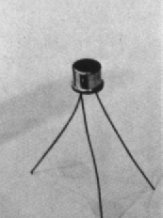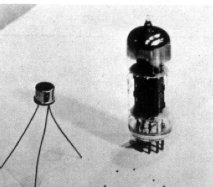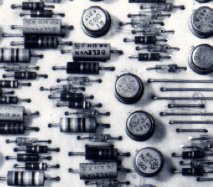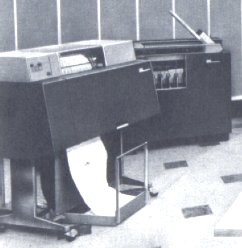|
Transistor : The second generation
At the beginning the experts themselves reckoned that only four or five big American companies could have been really interested in their use.
In 1951 starts the first calculation machine which is made in series and there is a big development of these machines, because of the introduction of new techniques, of new unities and programming methods.
In 1953 the calculation machines' number all over the world raises till about 100 unities.
In 1958 only the United States have about 2500 models in all.
In Italy the first calculation machine is settled in 1954 at the Milan Polytechnic University and only in 1957 it is used by a firm.
In 1958 it is settled in Italy a tenth of calculation machines, which support about 700 meccanographic employee.
In conclusion of the First Generation, at the end of the fifties, the electronic calculation machines have won their users' trust.
At the beginning they were considered more as calculus instruments and useful for the university researches than machines useful to the corporations or firms' operative needs for their capacities to execute information.
The calculation machines overcome more and more the restrictions due to some building and not refined programming techniques .
Their use doesn't represent any more an "adventure" for the firms and the corporations which settle them, but it answers to the necessity to solve the various operative problems.
About at the end of the fifties the empty tubes were replaced by the Transistors.
So it rises what is known as the "second generation" of the calculation machines.
Using the transistors and improving the machines and the programs, the calculation machine gets quicker and more economical and it diffuses in a tenth of thousand models all over the world.
By the changed general economical situation, the continuous firm's increase, the introduction of new organisation 's techniques and the management of a firm, it passes from a prevalently book-keeping and statistical use to some more complex applications which concern all the assets' sectors.
The transistor was realised in 1948 by the American J. Bardeen, W.M. Brattain and W. Shockley, who deserved because of it the Nobel; the transistor is an electronic device silicon crystal or germanium made in which different materials atoms are opportunely inserted.
For some values of the electric tension to which the transistor is exposed, it has the capacity to transmit or not the current ,so to represent the 1 or the 0 which are recognised by the machine.
Compared to the valves, the transistor have a lot of advantages: they have a smaller making price and a ten bigger times speed, passing from the position 1 to 0 in a few millionth of second.
The sizes of a transistor are of some millimetre compared to the quite a lot centimetre of empty tube.
The safety-operating directions is increased because the transistors, working "at cold", avoid the breaks because of the heating which were frequent in the valves.
Machines are so built with ten thousand complex circuits which are included in a small space.
Among the systems of the second generation we mark the IBM 1401, which was installed from 1960 to 1964 in more than one hundred thousand models, monopolizing about a third of the world market.
In this period there was also the only Italian attempt: the ELEA by Olivetti, produced in 110 models.
The remarkable development of the calculation machines and their applications in this period is not due only to the feature of the CPU (Central Processing Unit), but also to the continuos improvements done to the auxiliar memories and to the unities for the intake and emission of data.
The disks memories are able to set tens million of letters or digits.
More unities can be connected at the same time to the calculation machine, taking so the total memory capacity to some hundreds million characters.
Near the disks which are firmly connected with the central unity it is introduced some unities in which the piles of disks are mobile and they can be easily replaced by an other pile in few seconds.
Even if the mobile disks' capacity is smaller compared to the fixed ones, their interchangeability guarantees an unlimited capacity of data which are ready to the elaboration.
The second generation calculation machines, through a particular device made to sort the inside data, are able to superpose different operations, that means to read and punch the cards at the same time, to execute calculus and to take logical decisions, to write and read information on magnetic ribbons.
To guarantee the continuos change of information between the centre and the periphery, it rises the terminal unities which have to transmit the data to the central calculation machine which can be also at a distance of hundreds kilometres thanks to a telephonic connection.
|


















